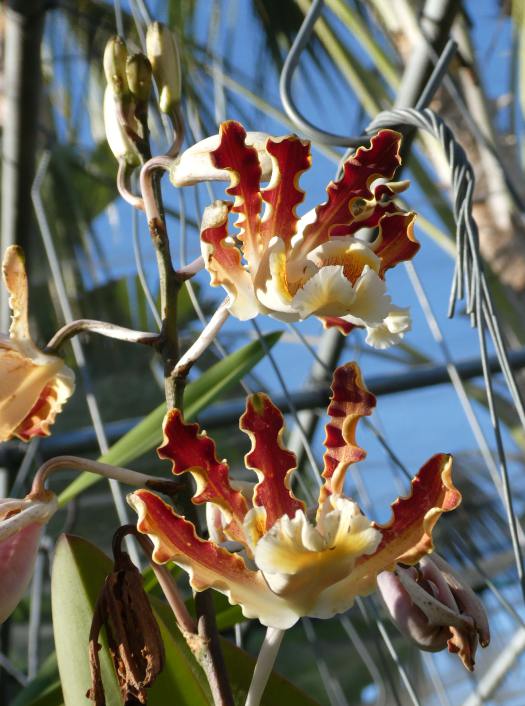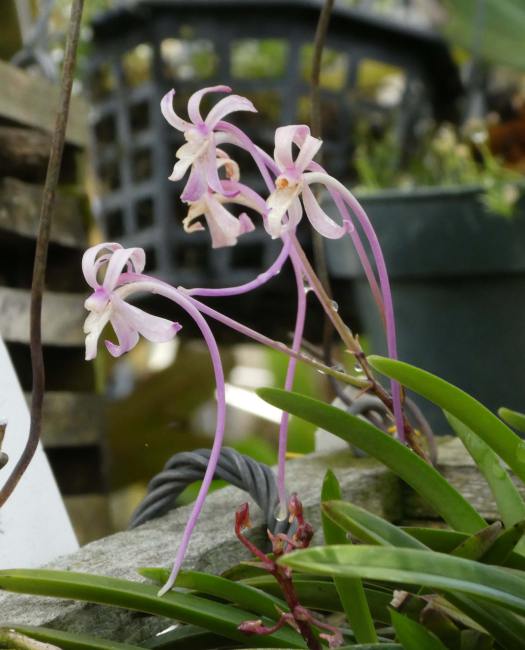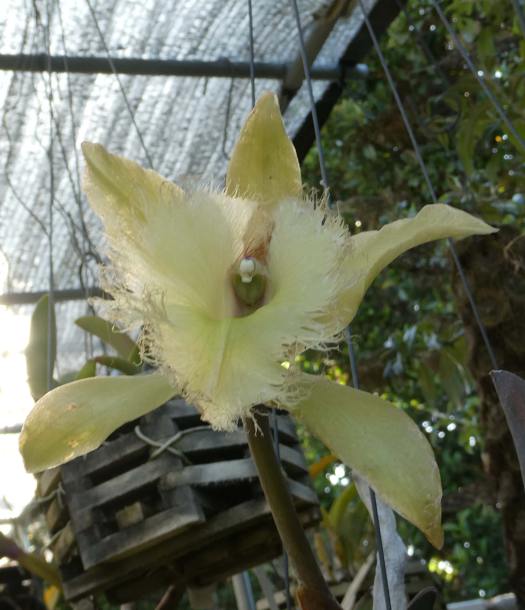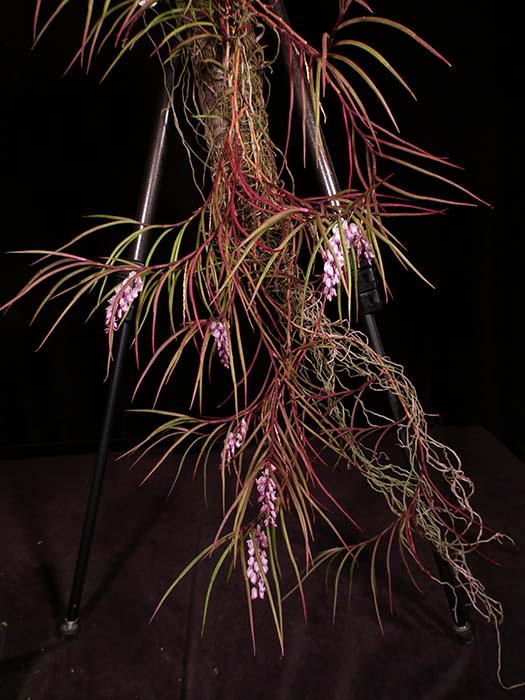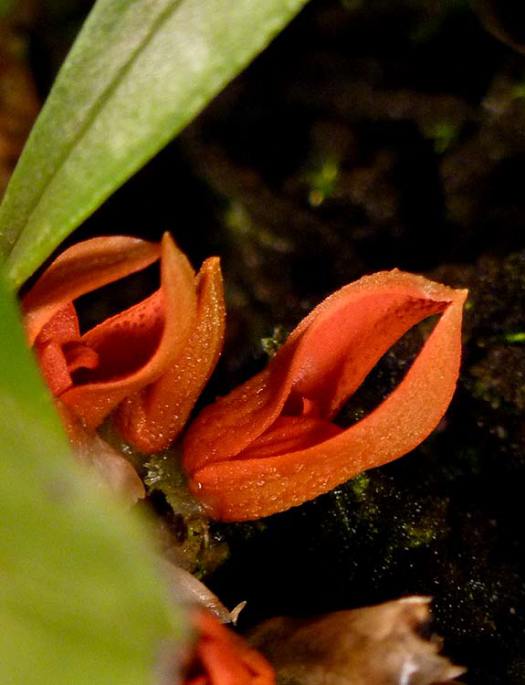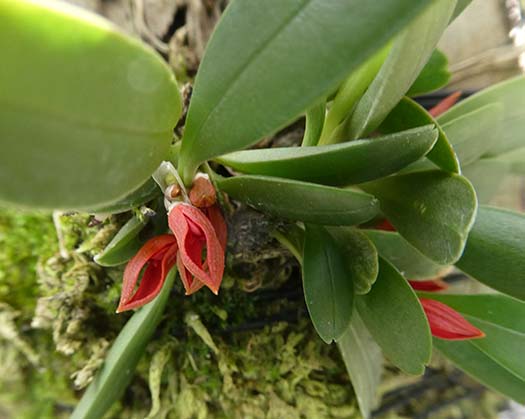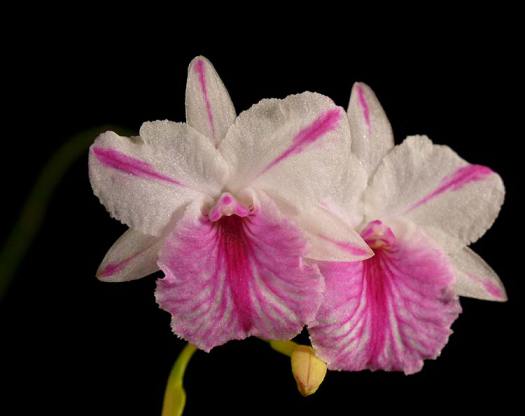August 2021
From Lynn Wiand:All orchids grown outdoors, coastal southern California |
|
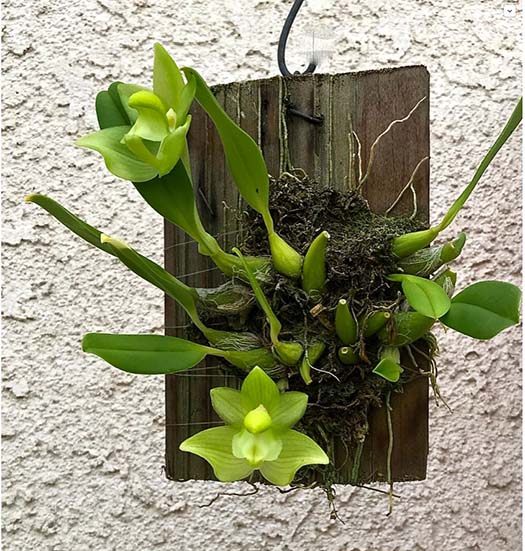
Bulbophylllum pectinatum 'Transar'From Taiwan. Flowers are 2 1/2 inches. |
|
 |
Stanhopea tigrina var. nigroviolaceaNative to Mexico. Highly fragrant |
From Scott McGregor:All orchids grown outdoors, coastal southern California |
|
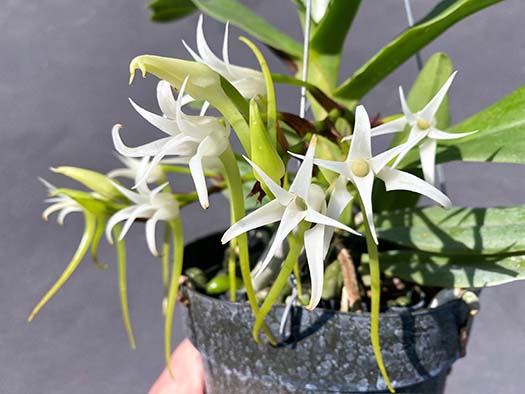
Cyrtorchis arcuata ssp. whytei 'Northern' HCC/AOS x selfThis Angraecoid species is widely distributed across Africa and does well outside. It has 2” pure white flowers with 4” spurs and very thick (1/2 inch) roots. It seems to prefer being in a basket or overflowing its pot. It is night-fragrant. |
|
Dichaea glaucaAttractive plant when not in bloom, good outdoor grower (needs R/O water), with small but lots of sweetly scented flowers on new and old growths. |
|
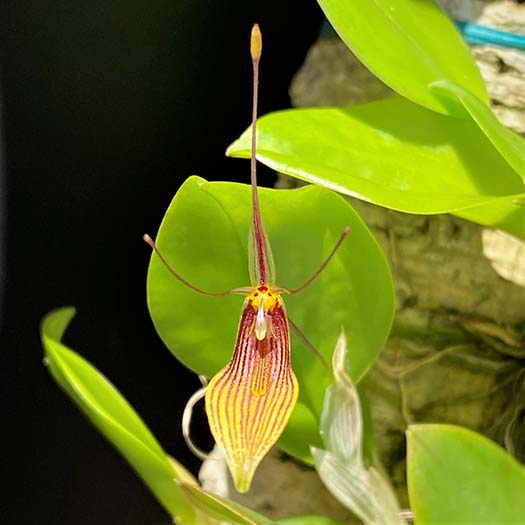
Restrepia brachypus v. striataA cool-grower from the Andes in Ecuador and Peru, this Restrepia species flowers sporadically from winter to early summer. |
|
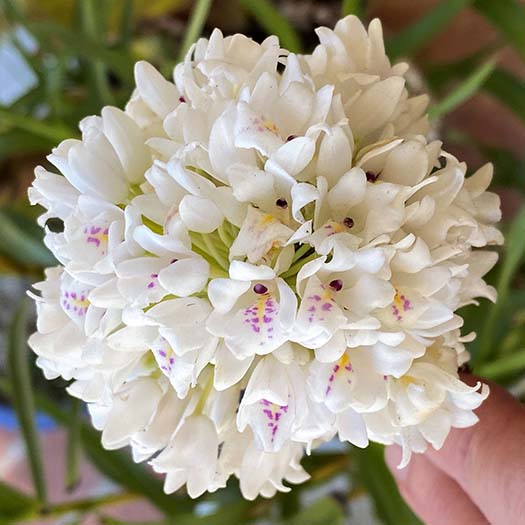
Neobenthamia gracilisThis species from Tanzania has lots of bad cultural info on the web, often being described as lithophytic and requiring warm to hot growing conditions and medium bright light. If you follow that advice, you get little plants and a few pathetic flowers. I’ve found the best culture is to grow it as a terrestrial, in a rich, well-draining mix, in a relatively large pot, with lots of fertilizer, and as much full sun as you can provide. I grow it outdoors, on a south facing patio getting about 6 hours of direct full sun, and don’t give it any protection from cold or rainy nights in the winter—so much for “warm to hot”! In a few years my plant has more than doubled in size every year, and continuously flowers on heads that each sequentially produce flowers for 6-9 months. The flowers aren’t especially striking but are fragrant, and hard not to like always being in bloom, since July of last year! |
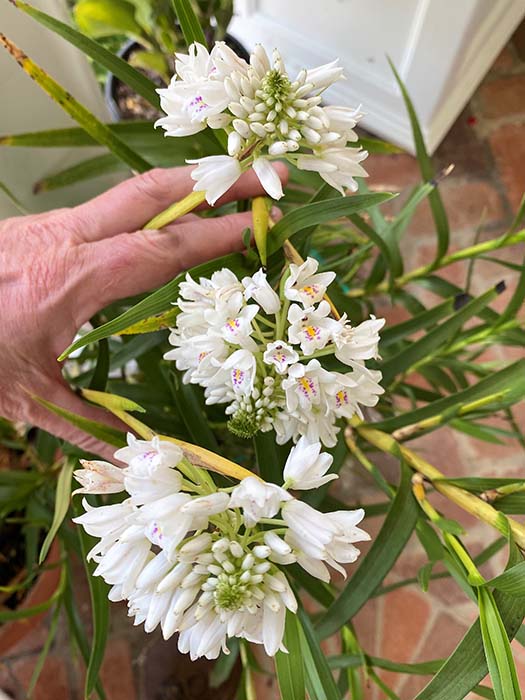 |
 |
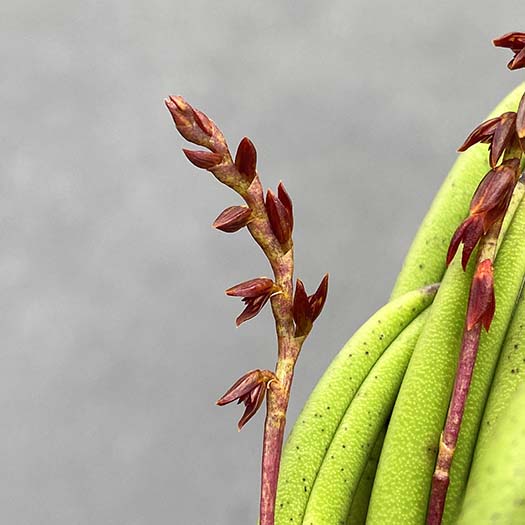 |
Pleurothallis teresYou definitely don’t grow this one for the tiny, ugly and dubious smelling flowers, but I like the aesthetics of the plant itself (out of bloom) with its tightly-packed 2” terete leaves. Unlike most of the genus, it grows more dry and is a lithophyte, preferring bright light. It is an easy grower and stays quite compact—just now outgrowing its 2” pot after a decade. |
|
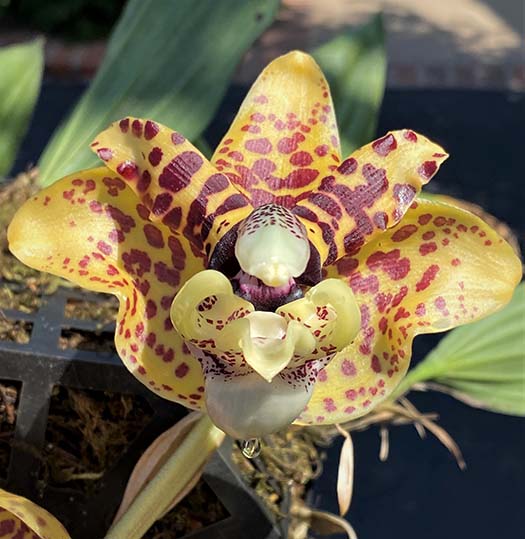 |
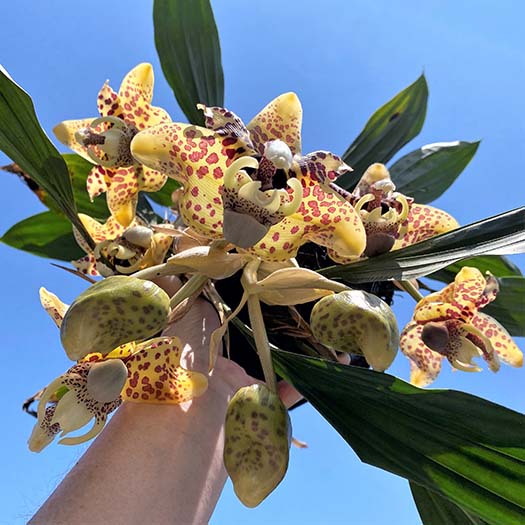 |
Stanhopea hernandeziiA species from Mexico—short-lived but large, waxy and intensely fragrant (bubble gum) flowers produced through the bottom of the basket. Easy outdoor grower, preferring shady to bright conditions. |
|
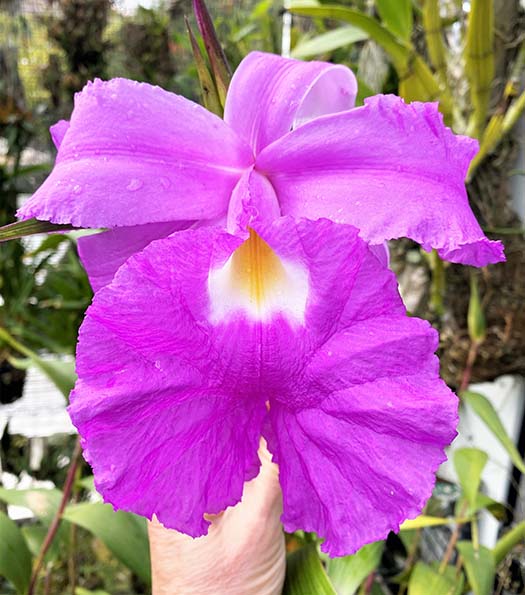 |
Sobralia rogersiana 'de Brito'Summer is Sobralia season! This species used to be called S. macrantha 'Bolin', but is now a separate species. One of the largest orchid flowers! Easy outdoor grower. |
From Roberta Fox:
|
|
Outside in the Back Yard: |
|
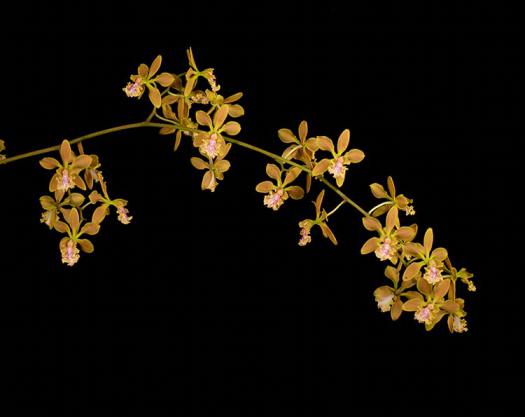
|
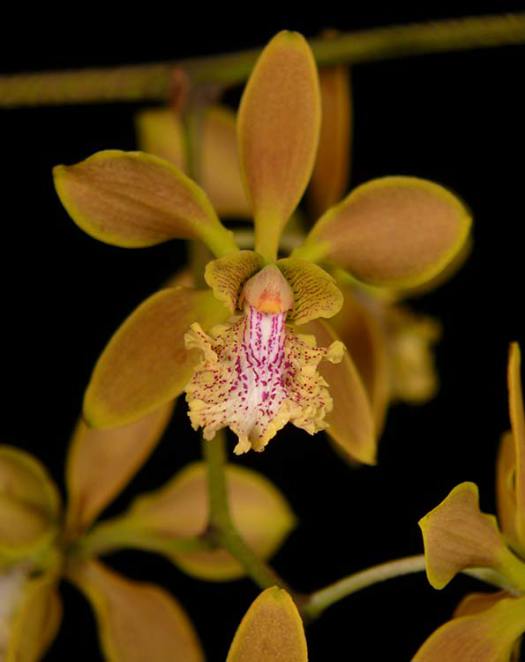 |
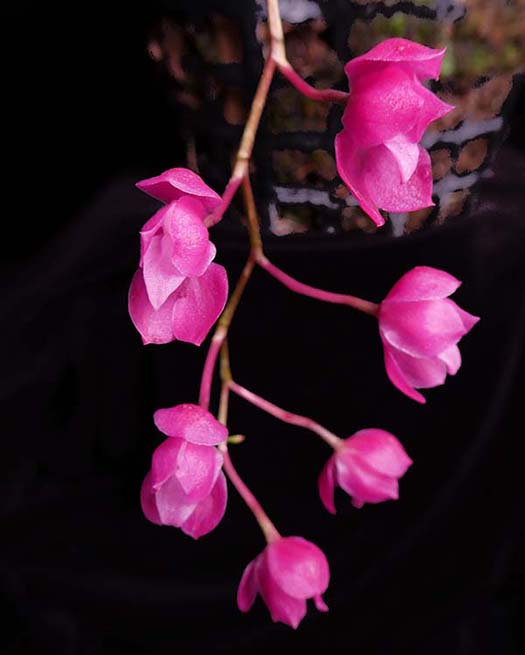 |
|
Symphyglossum sanguineum (Oncidium strictum)From Ecuador and Peru, elevations from 1000-2000 m. I grow it in filtered sun/bright shade. With multiple spikes, it stays in bloom for more than a month. |
|
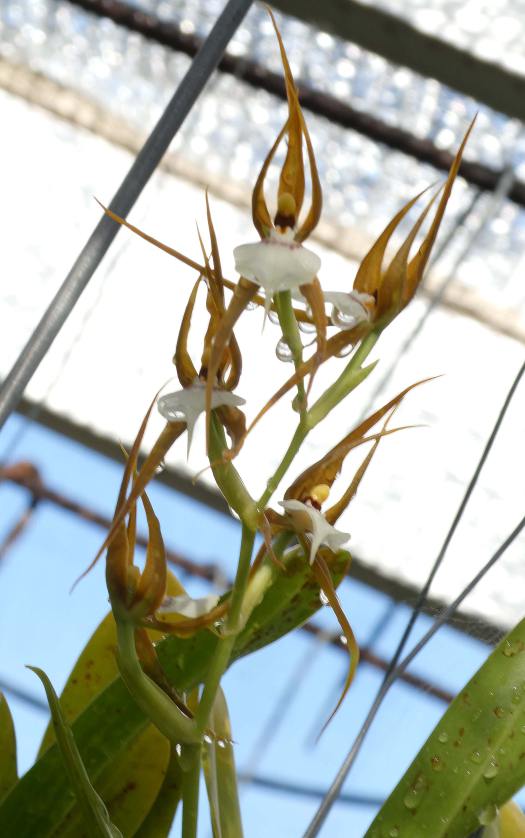
Ada (Brassia) glumaceaFlowers are not particularly showy, but are very fragrant. They smell to me like very ripe fruit. I tend to smell it before I notice the flowers. |
|
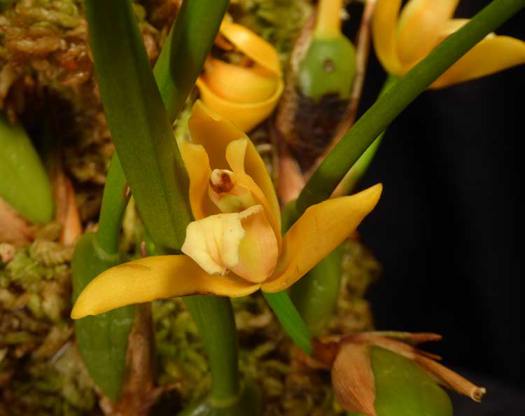
Maxillaria tenuifolia f. aureaThe same coconut fragrance as the more common red form. |
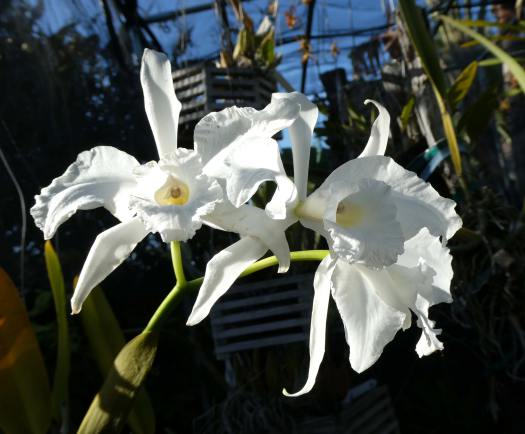
Laelia (Cattleya) purpurata 'Tipo' AM/AOS x selfTo me, "tipo" refers to the typical form, which has light pink petals and dark lip. However, turns out that 'Tipo' was the cultivar name given to the awarded plant, which did have those characteristics. I was very surprised to get pure white flower... I asked Fred Clarke of Sunset Valley Orchids, the source of the plant, about it, and he said that there were quite a few albas that came out of that selfing... so the plant clearly was line-bred, with some L. purpurata f. alba in its ancestry. The surprises of genetics... |
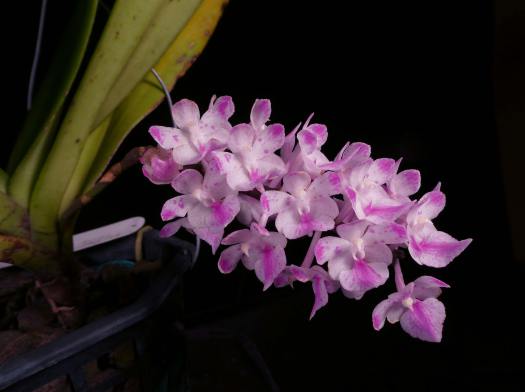 Aerides roseaFound across a wide area of southeast Asia, at elevations from about 500-1500 m. |
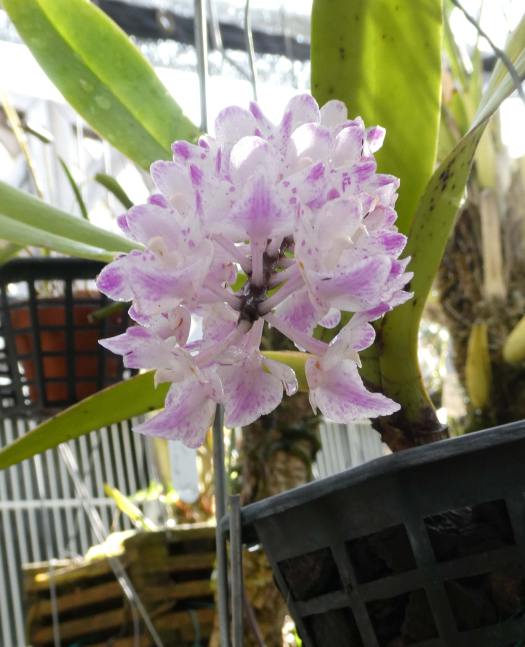 |
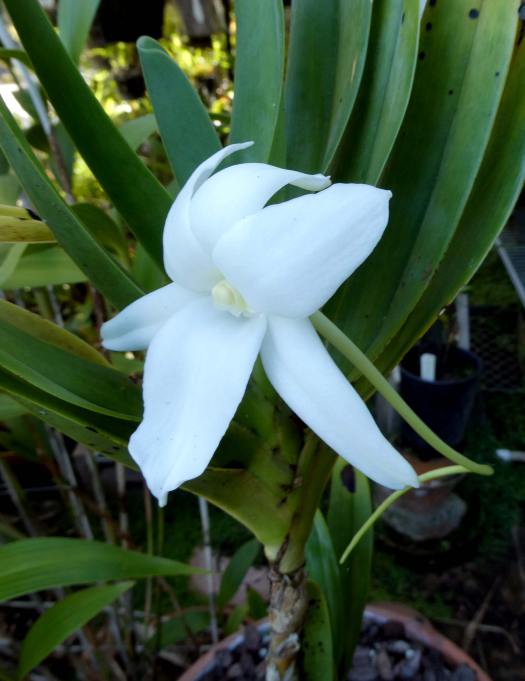 Angraecum sororiumFrom the central highlands of Madagascar. This is the first time blooming for me. It's not a mini... plant is about 24 inches tall, and just hitting its stride, starting a new basal growth. Andy Phillips cut this from a monster plant. It has established well in a 10-inch terracotta pot. I have found that it needs to grow fairly bright to bloom. |
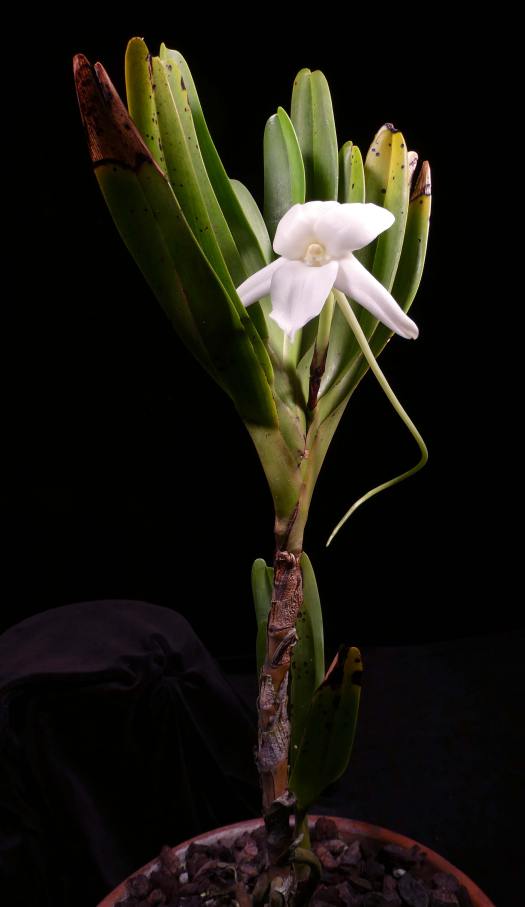 |
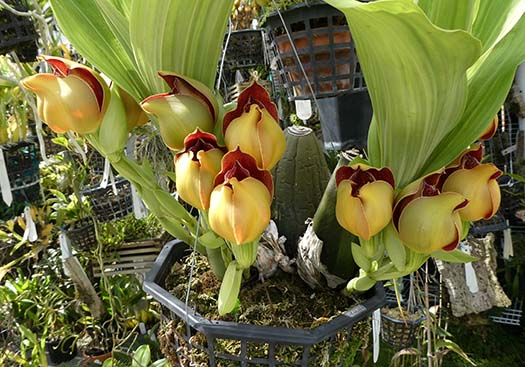
Anguloa brevilabrisNative to Colombia and Peru. This one is a bit of a beast. It is in a 10 inch basket. There are about 11 flowers. The pseudobulbs are 6 inches tall. It seems to bloom about every 2 years - the new growths will mature, next year they will lose leaves, and the year after will produce new growths and flowers. I have a small pot inverted in the center of the basket so that it doesn't stay too soggy. It is quite fragrant. |
 |
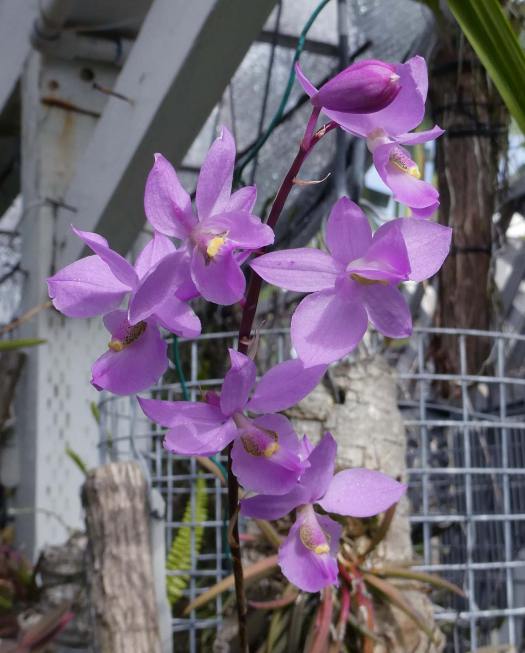
Barkeria melanocaulonNative to SW Mexico, at elevations around 1600-1700 m. Like all Barkerias, it loses leaves once it blooms. I have learned (the hard way) not to cut the spent spikes until the new growth is established the next year, and just break off the top brittle part. The old canes may look dead, but are very much alive, and are needed to sustain the plant. |
|
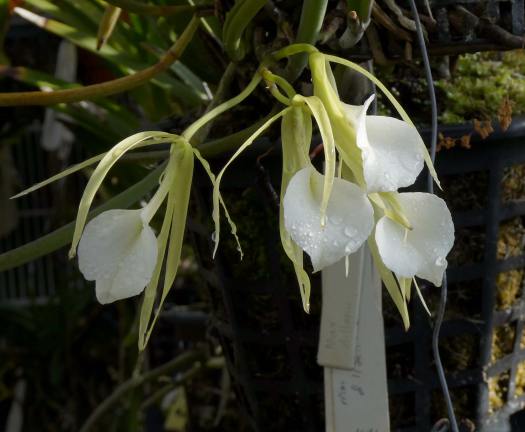 Brassia nodosa"La dama de la noche" for its lovely fragrance in the evening. I grew this completely outdoors for quite a few years, and it did just OK... slow growth, relatively few flowers. I have been moving it to the greenhouse in the winter, and it has exploded with new growth, so I guess it really wants to be a bit warmer. I keep it out on the patio until nights get below about 50 deg F. By that time it's mostly done blooming. But I totally enjoy the evening fragrance all summer long. It keeps producing flowers for several months. |
|
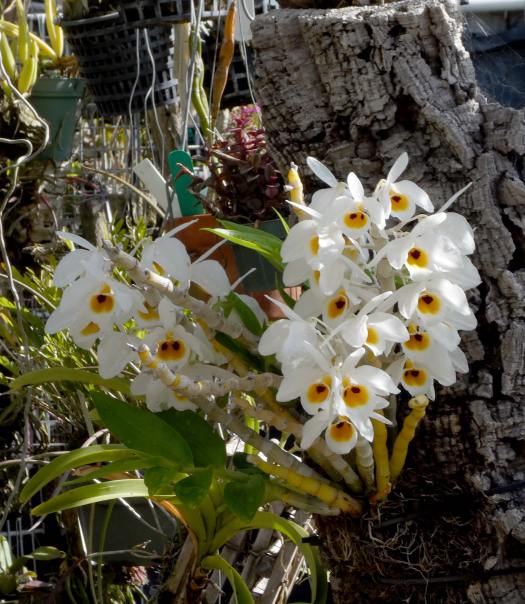
Dendrobium bensoniaeFlowers have the fragrance of vanilla. This one goes completely deciduous in winter, and is one of the few that I do keep fairly dry. The new growth doesn't start until about mid-June, and the buds appear at about the same time. It blooms on the prior year's canes. |
|
.jpg)
Dendrobium glomeratum (sulawesiense)Satuated magenta flowers contrast with the orange lip, so it almost glows. It can bloom repeatedly on old canes. It has a reputation as a warm grower, but it seems to do just fine outside on the patio. I suspect that there are populations from different elevations that require different conditions. |
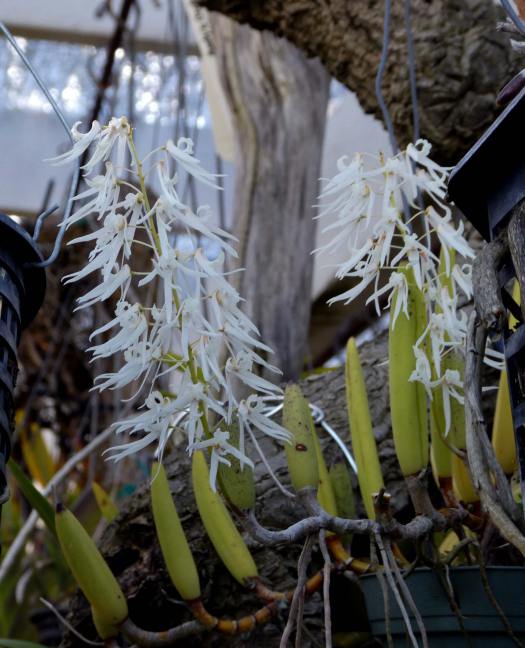
Dendrobium wasselliiNative to Queensland, Australia. A mass of weird flowers emerge from the base of the succulent leaves. |
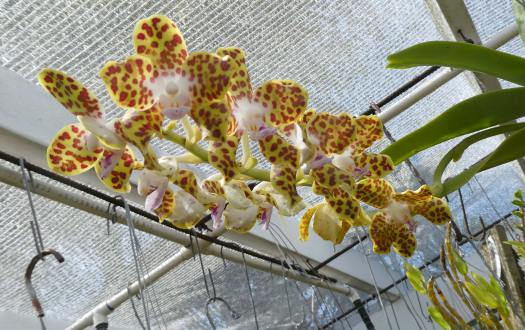 Hygrochilus parishii (Vandopsis parishii, Phalaenopsis hygrochila)Plant looks like a Vanda, not a Phal. It was placed in the monotypic genus Hyrochilus, but then got lumped into Phalaenopsis in the latest round of reclassifications. By whatever name, it comes from South-Central China and much of southeast Asia, at elevations from 600-1500 m. It is quite fragrant, with long lating (2 months) flowers, and cold-tolerant. It is also a vigorous "root machine". |
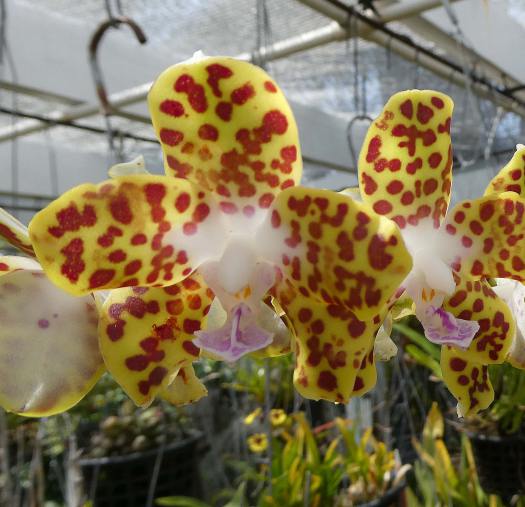 |
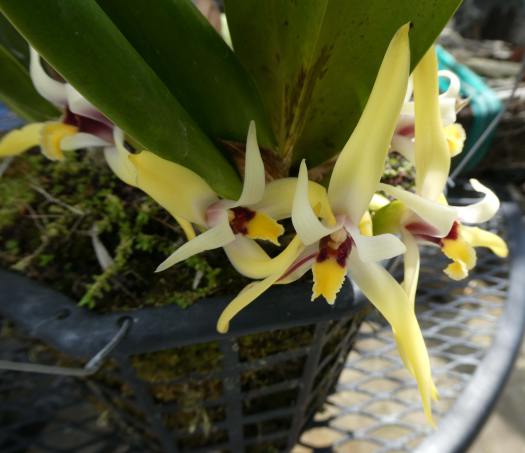
Maxillaria dilloniiLots of waxy flowers. Native to Ecuador and Peru. |
|
Neofinetia (Vanda) falcata 'Beni-suzume'The first of my Neos to bloom. I was away on vacation in the middle of July, and have had the experience of leaving buds and coming home to spend spikes. This year they are running a bit late, so I have avoided that disappointment. |
|
 Rhyncholaelia digbyanaAbove, alba form with no red pigment at all. Right, the typical form, with a blush of red at the tips of segments (and on the backs as well). Citrus aroma, mostly at night. |
|
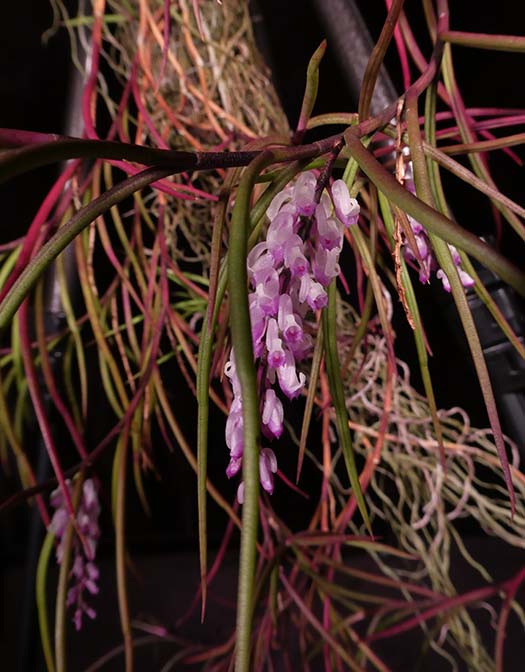 |
|
Schoenorchis juncifoliaNative to Java, Borneo, Sumatra, 1500-1800 m. Inflorescences look like little Wisteria. Plant grows rather shady, but still has a lot of red pigment in the needle-like leaves. Extremely vigorous. |
|
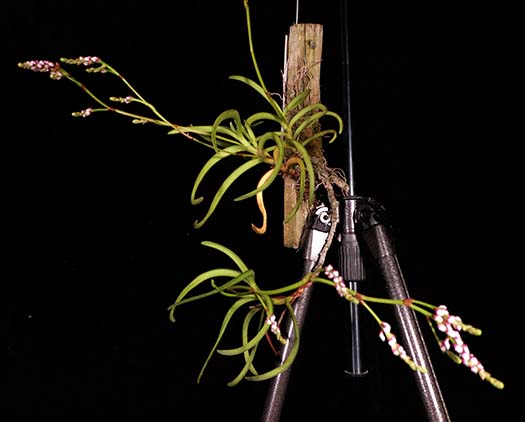 Schoenorchis gemmataFrom south-central China, Himalayas, wide area of southeast Asia. Not as vigorous as S. juncifolia, but still puts on a good show. |
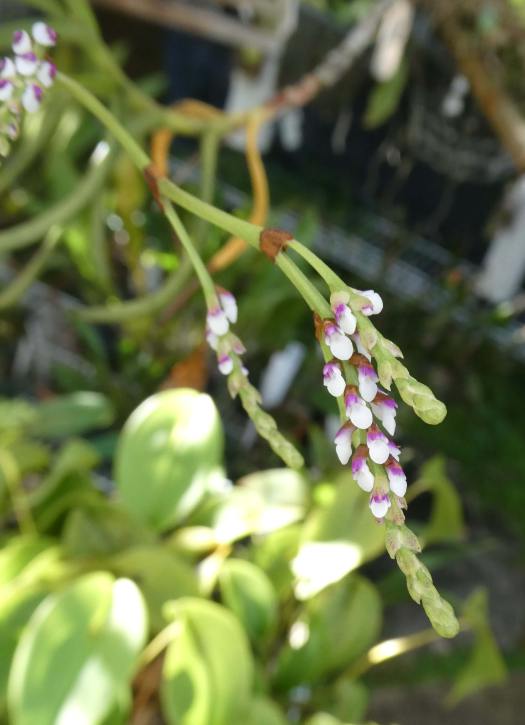 |
 .Sobralia sanderaeOne of my most beautiful Sobralias, with pale yellow flowers, dark pink lip and bright yellow throat. I wonder, "Why hybridize?" Hybrids between yellow and pink Sobralias tend to be almost white... here we have the colors. Short-lived flowers typical of the genus, but it keeps producing them over a period of about two months. |
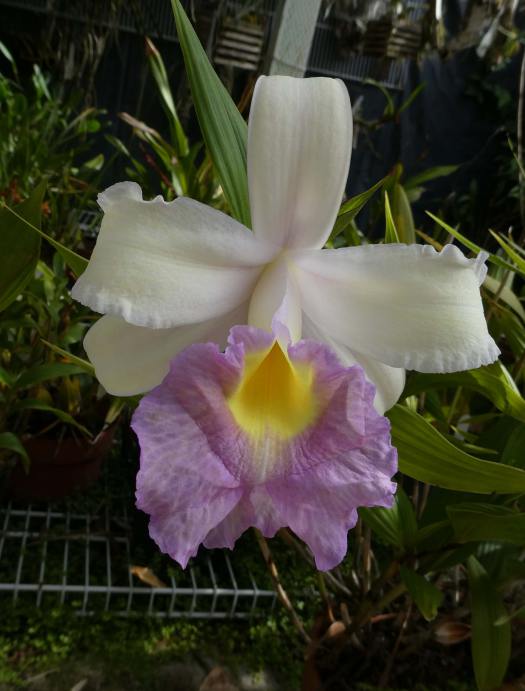 |
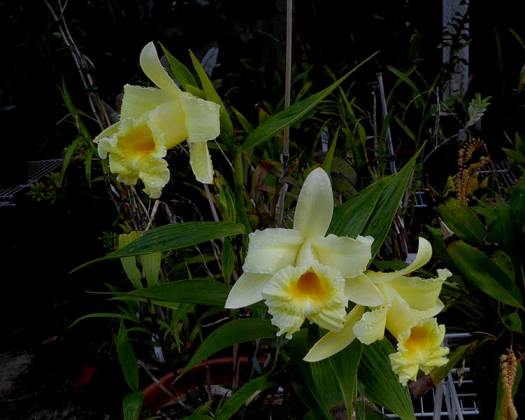
Sobralia xantholeucaBrilliant yellow flowers. I grow it somewhat shady. |

Sophronitis bicolor (Cattleya dichroma)Saturated orange flower with contrasting yellow sidlobes of the lip. |
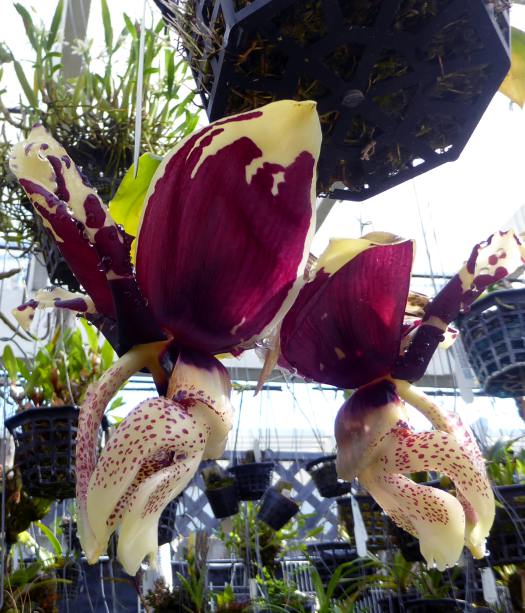
Stanhopea tigrinaLast year's photo... I went on vacation for 11 days, leaving behind fat buds. Of course it (and another Stan. tigrina) bloomed in my absence, and short-lived flowers were done by the time I returned. |
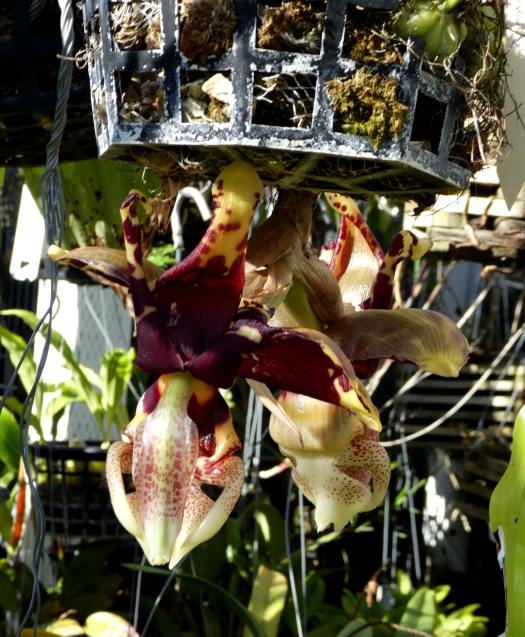
Sanhopea tigrina var. nigroviolacea 'Predator' x selfThis one I got to enjoy just barely... flowers a bit past their prime, but on my return I did get one day of fragrance before they completely faded. This variety is somewhat darker than the typical Stan. tigrina. It is sometimes shown as Stan. nigroviolacea, but seems to be more recently considered a color form of Stan. tigrina rather than a separate species. |
.jpg)
Stanhopea oculata (Stan. bucephalus)This is a selfing of a plant that was awarded as Stan. bucephalus, but now classified as Stan. oculata, which is highly variable. (Some cultivars are covered with circular spots, and often paler... and bloom at a different time) |

Rossioglossum schlieperianum f. aureaTypical form has dark reddish-brown bars. |
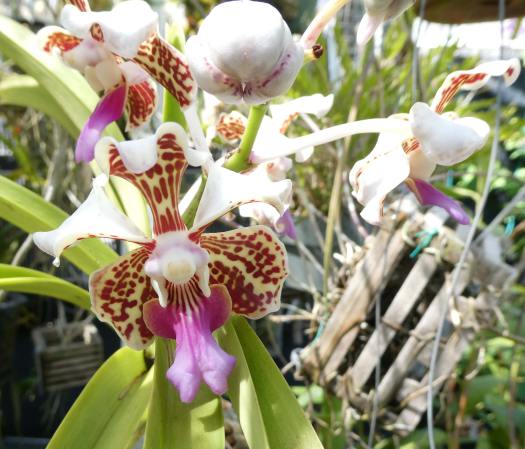
Vanda tricolorI have had this plant, growing outdoors, for over 20 years, so it is a survivor. It became very leggy, had good roots just below the leaves, so I "topped" it. It sulked for a year or so but seems to have recovered. The bottom part has a nice basal keiki that hasn't bloomed yet, but I hope to have a backup plant from it. Greenhouse-grown plants are bigger and stronger than mine, but it does tolerate cool winter nights. It is also lightly fragrant. |
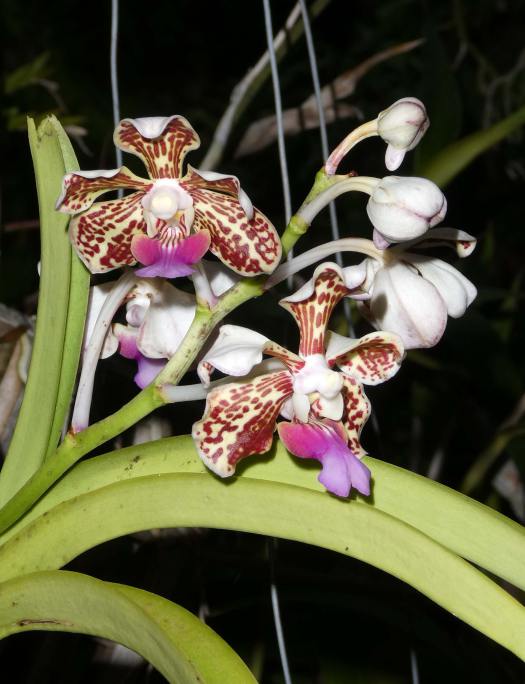 |
 |
|
Pleurothallis tribuloidesI have been growing one of these in the greenhouse for about 9 years, and so I had planned to put it in the "Greenhouse" section. But my eye caught a flash of orange at the back of my patio growing area, and I discovered another plant of this species, that I had acquired almost 2 years ago and mounted, was also in bloom. So... this species very definitely can grow outside. Above right is the greenhouse plant, in a 4 inch basket, below right is the mounted one that is growing outside. The latter has more flowers than I can capture in one photo, since they are tucked in among the leaves, all around the plant. It is clearly doing quite well! Flowers are 1/4 to 3/8 inch. |
|
In the greenhouse... |
|

Angraecum distichumThis plant produces flush blooms every few months. |
|
 |
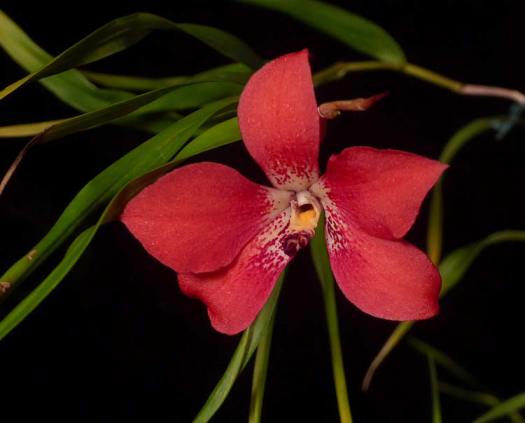 |
Dendrobium cinnabarinumBlooms mostly on old canes, but I got a flower on a cane with leaves, as well. The plant is maturing, and I have high hopes for getting more of these brilliant flowers at the same time... so far it has been one at a time but now with less time between flowers. |
|
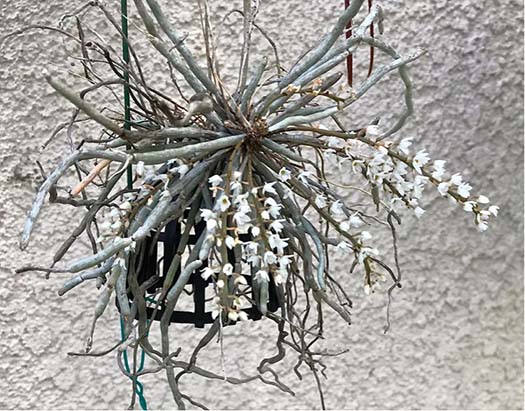


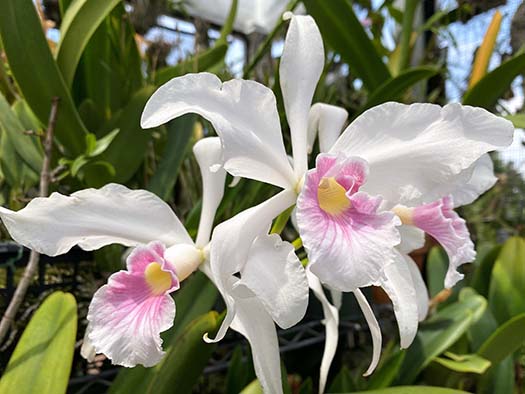
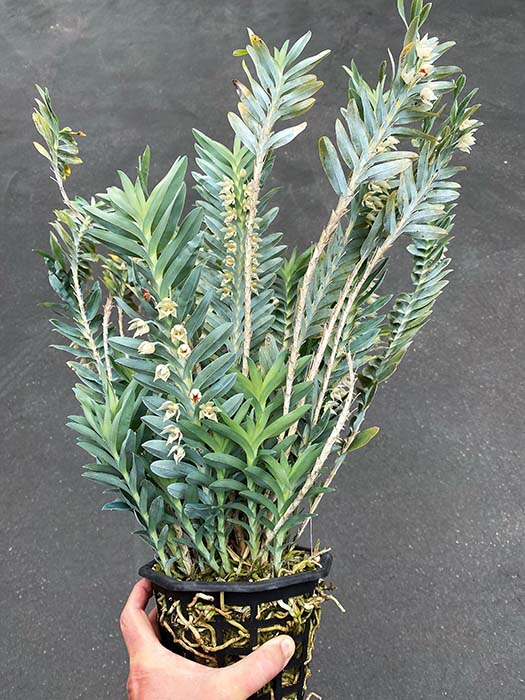
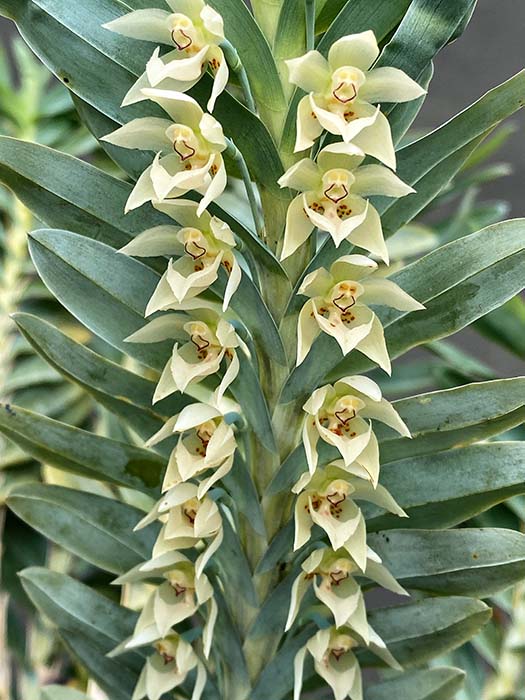

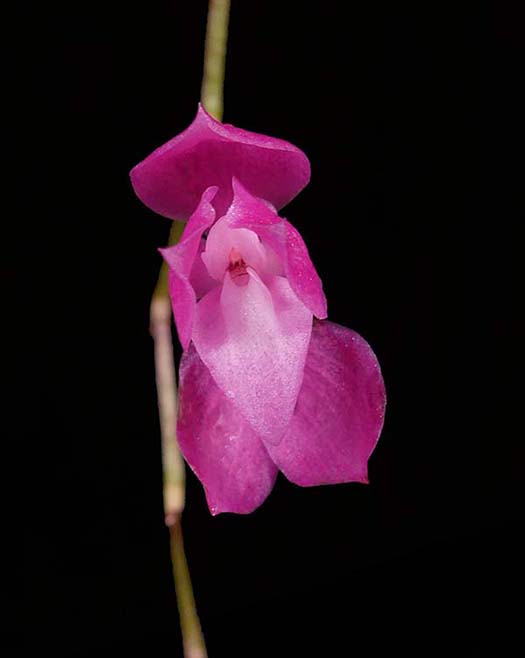

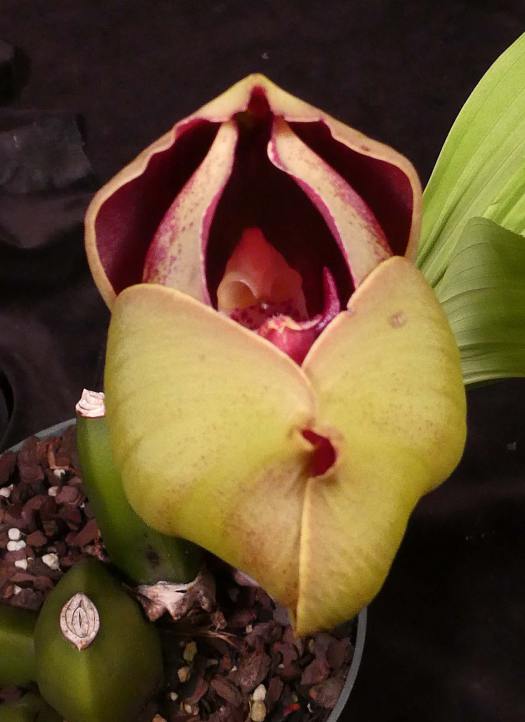
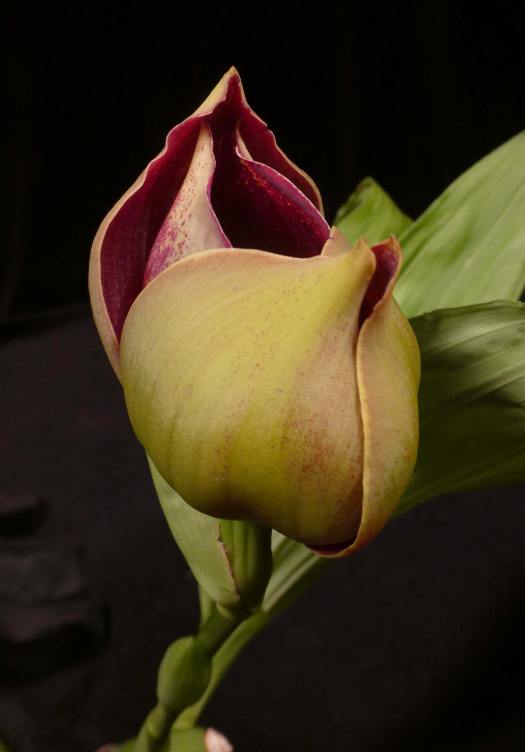
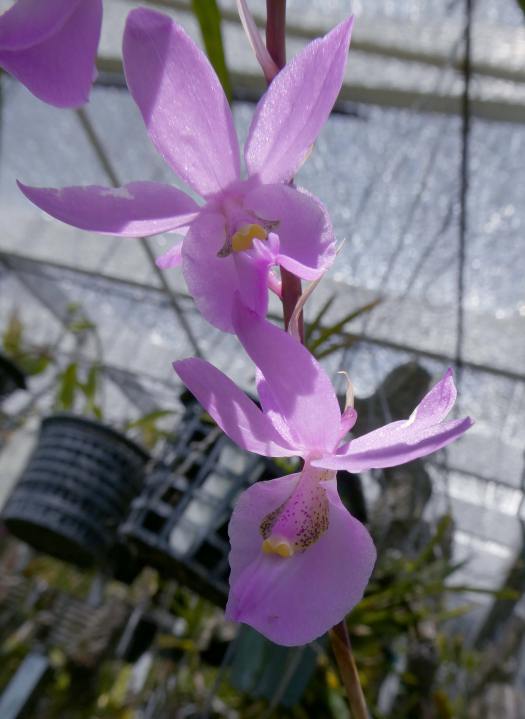

.jpg)
